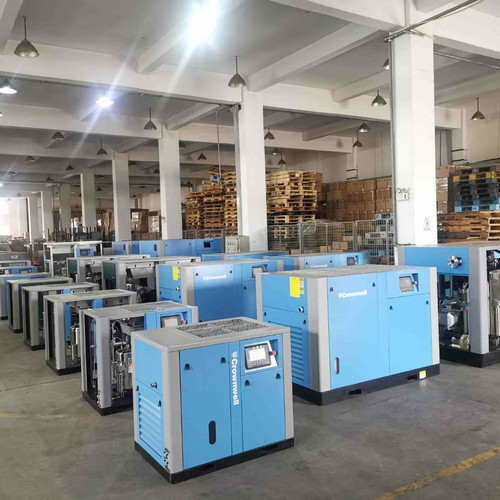For producing compressed air for various industrial applications, fixed-speed screw compressors are renowned for their dependability and effectiveness. These compressors are continuously optimized to increase their performance through capacity modulation, effective cooling and lubrication systems, and integration with cutting-edge control systems. We will look at methods for improving the performance of fixed-speed screw compressors, which will increase their effectiveness and output.
Lubrication System Optimization
The performance and endurance of fixed-speed screw compressors depend on proper lubrication. Optimized lubrication systems ensure that all moving parts, such as bearings and rotors, receive enough lubrication to minimize friction and reduce energy losses. Regular upkeep and the use of superior lubricants assist in maintaining the compressor’s effectiveness, stopping premature wear, and lowering the chance of downtime.
Air and Oil Cooling
Screw compressors with fixed speeds use effective cooling systems to keep their working temperatures at the ideal level. The heat created during compression is dissipated via fans and heat exchangers in air cooling systems. Extraordinary oil is circulated via oil cooling systems through the compressor’s internal parts to dissipate heat and provide optimal lubrication. In addition to preventing overheating, effective cooling raises the compressor’s general effectiveness and dependability.
Integration with Advanced Control Systems for Enhanced Performance
Remote Monitoring and Diagnostics
Fixed-speed screw compressors can be remotely monitored and diagnosed thanks to integration with sophisticated control systems. Real-time monitoring allows operators to spot possible problems and take preventative action to stop system failures or inefficiencies. Remote diagnostics offer insightful information about the compressor’s operation, enabling prompt repair and improvement. This feature increases overall system dependability and reduces downtime, which helps to increase production.
Predictive Maintenance
To foresee probable failures or maintenance requirements, advanced control systems might use predictive maintenance algorithms that analyze data collected from the compressor. The system can detect anomalies and notify maintenance staff by monitoring metrics, including vibration, temperature, and performance deviations before a severe breakdown happens. This preventative approach to maintenance lowers the possibility of unscheduled downtime, improves performance, and increases the compressor’s lifespan.
Centralized Control and Monitoring
Using sophisticated control systems, multiple fixed-speed screw compressors can be combined into one centralized control unit. This makes it possible to coordinate and optimize compressor operation according to air demand seamlessly.
Capacity Modulation and Control Strategies
One of the primary strategies for optimizing performance in fixed-speed screw compressors is load/unload control. This method automatically switches the compressor between loaded and unloaded states based on air demand. When the demand reaches a pre-set threshold, the compressor operates in the loaded state, providing compressed air. Once the demand decreases, the compressor switches to the unloaded state, idling without power. This strategy minimizes energy consumption during periods of low demand, resulting in cost savings and improved efficiency.
Variable Speed Drive (VSD)
Variable speed drives can be added to fixed-speed screw compressors, enabling smooth capacity modulation in response to air demand. Significant energy savings are achieved due to the VSD adjusting the motor speed to match the needed compressed air production. The VSD minimizes energy waste and maximizes efficiency by operating the compressor at lower speeds during decreased demand. This method also increases the compressor’s lifespan by lessening the wear and tear brought on by repeated starts and stops.
